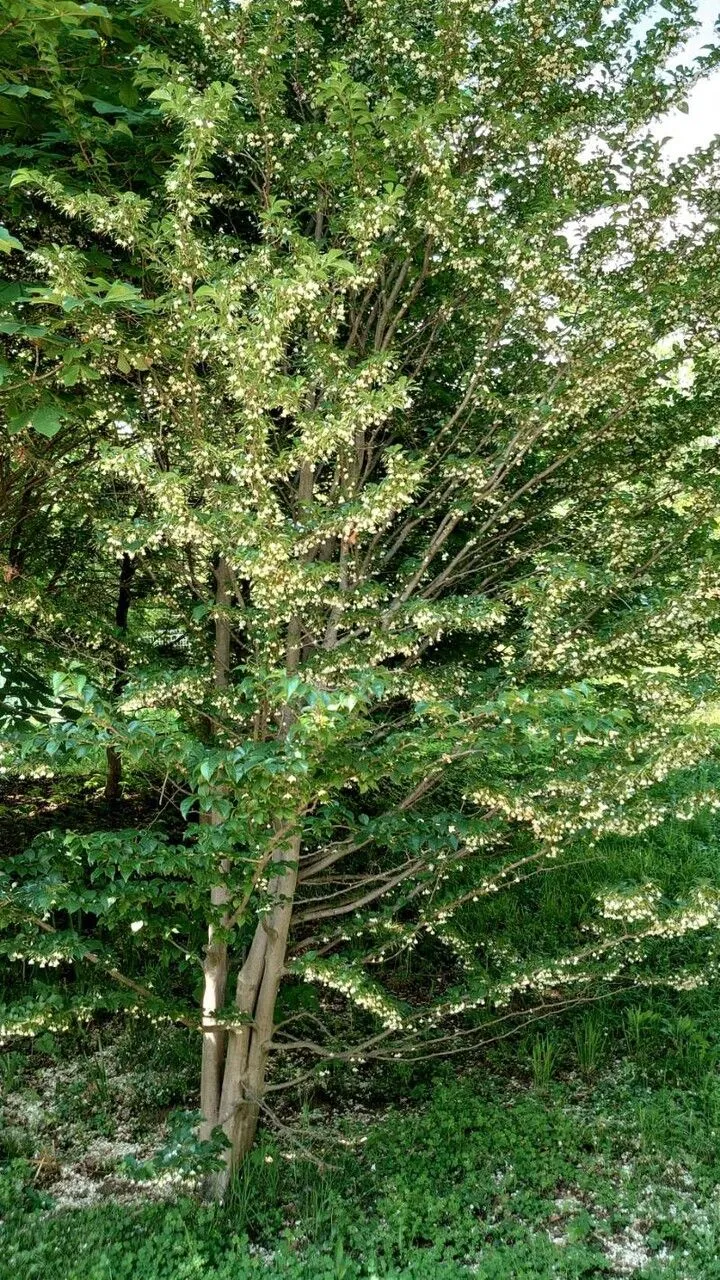
Author: Siebold & Zucc.
Bibliography: Fl. Jap. 1: 53 (1837)
Year: 1837
Status: accepted
Rank: species
Genus: Styrax
Vegetable: False
Observations: Nepal to Japan and N. Philippines
The Japanese snowbell, scientifically known as Styrax japonicus, is a captivating deciduous tree belonging to the Styracaceae family. This enchanting plant has its origins stretching from Nepal across to Japan and extending down to the northern Philippines. First described in “Flora Japonica” in 1837 by renowned botanists Siebold & Zuccarini, the Japanese snowbell has since been admired for its striking appearance and versatile applications in ornamental gardening.
With a modest stature, the Japanese snowbell generally attains a height of 20 to 30 feet, though under optimal conditions, it can occasionally reach up to 50 feet. Its elegant, horizontal branching structure creates a graceful silhouette that makes it a prized specimen in landscape design.
One of the most remarkable features of Styrax japonicus are its delicate, fragrant flowers. Blooming in late spring to early summer, these pendulous, bell-shaped blossoms cluster beneath the branches, presenting a snow-like effect that gives the tree its common name. The flowers, typically white with a hint of yellow stamens, not only add to the visual allure but also attract a variety of pollinators, including bees and butterflies.
The foliage of the Japanese snowbell is equally attractive, consisting of elliptical, dark green leaves that turn to varying shades of yellow and orange in the fall, providing a vibrant display of autumn colors. The leaves, combined with the tree’s modest, yet charming bark that can age to an interesting mix of smooth and fissured textures, enhance its year-round appeal.
Culturally and historically, the Japanese snowbell holds significant value in the regions where it natively grows. It is frequently planted in gardens and parks for its aesthetic qualities and its relatively low maintenance requirements. The tree thrives best in well-drained soils and prefers full sun to partial shade. It is also reasonably tolerant of urban conditions, which makes it a popular choice for urban green spaces.
In summary, the Japanese snowbell (Styrax japonicus) is a beautiful and versatile tree, cherished for its elegant structure, fragrant flowers, and vibrant fall foliage. Its adaptability to a variety of growing conditions, coupled with its ornamental traits, makes it a worthy addition to many garden landscapes around the world.
Eng: japanese snowbell, japanese storax
Swe: japansk storax
En: Japanese snowbell, Japanese storax, Styrax trees
Sv: Japansk storax
© copyright of the Board of Trustees of the Royal Botanic Gardens, Kew.
© copyright of the Board of Trustees of the Royal Botanic Gardens, Kew.
© copyright of the Board of Trustees of the Royal Botanic Gardens, Kew.
Taken Sep 9, 2020 by Cayce Jo (cc-by-sa)
Taken Sep 5, 2022 by Sydney Jena (cc-by-sa)
Taken Sep 1, 2021 by Jennifer Carson Klubnik (cc-by-sa)
Taken Oct 6, 2021 by russ docksteader (cc-by-sa)
Taken Aug 9, 2021 by Gilda Krüger (cc-by-sa)
Taken Aug 19, 2009 by Daniel Barthelemy (cc-by-sa)
Taken Jun 11, 2021 by Philippe de Spoelberch (cc-by-sa)
Taken Jul 31, 2021 by Miroslav Cikan (cc-by-sa)
Taken May 27, 2022 by Manuëlle (cc-by-sa)
Taken Aug 19, 2009 by Daniel Barthelemy (cc-by-sa)
Taken Nov 1, 2020 by Maarten Vanhove (cc-by-sa)
Taken Aug 30, 2022 by Adam Van Straten (cc-by-sa)
Taken May 27, 2022 by Manuëlle (cc-by-sa)
Taken Sep 5, 2022 by Sydney Jena (cc-by-sa)
Taken Jun 3, 2022 by Marie Gentile (cc-by-sa)
Taken May 27, 2022 by Manuëlle (cc-by-sa)
Taken Jun 2, 2021 by Ernst Schwintzer (cc-by-sa)
Taken Jun 29, 2022 by Aine Hawthorn (cc-by-sa)
Taken May 3, 2022 by opeo0920 (cc-by-sa)
Taken May 26, 2022 by Cécile (cc-by-sa)
Taken Jul 1, 2022 by Hervé Rey (cc-by-sa)
Taken May 27, 2022 by Manuëlle (cc-by-sa)
Taken Aug 29, 2022 by Donna Hegarty (cc-by-sa)
Taken Sep 5, 2022 by Sydney Jena (cc-by-sa)
Growth habit: Tree, Shrub
Family: Myrtaceae Author: (F.Muell.) K.D.Hill & L.A.S.Johnson Bibliography: Telopea 6: 402 (1995) Year: 1995 Status:…
Family: Rubiaceae Author: Pierre ex A.Froehner Bibliography: Notizbl. Bot. Gart. Berlin-Dahlem 1: 237 (1897) Year:…
Family: Sapindaceae Author: Koidz. Bibliography: J. Coll. Sci. Imp. Univ. Tokyo 32(1): 38 (1911) Year:…
Family: Asteraceae Author: A.Gray Bibliography: Pacif. Railr. Rep.: 107 (1857) Year: 1857 Status: accepted Rank:…
Family: Fabaceae Author: Medik. Bibliography: Vorles. Churpfälz. Phys.-Ökon. Ges. 2: 398 (1787) Year: 1787 Status:…
Family: Aspleniaceae Author: (Cav.) Alston Bibliography: Bull. Misc. Inform. Kew 1932: 309 (1932) Year: 1932…